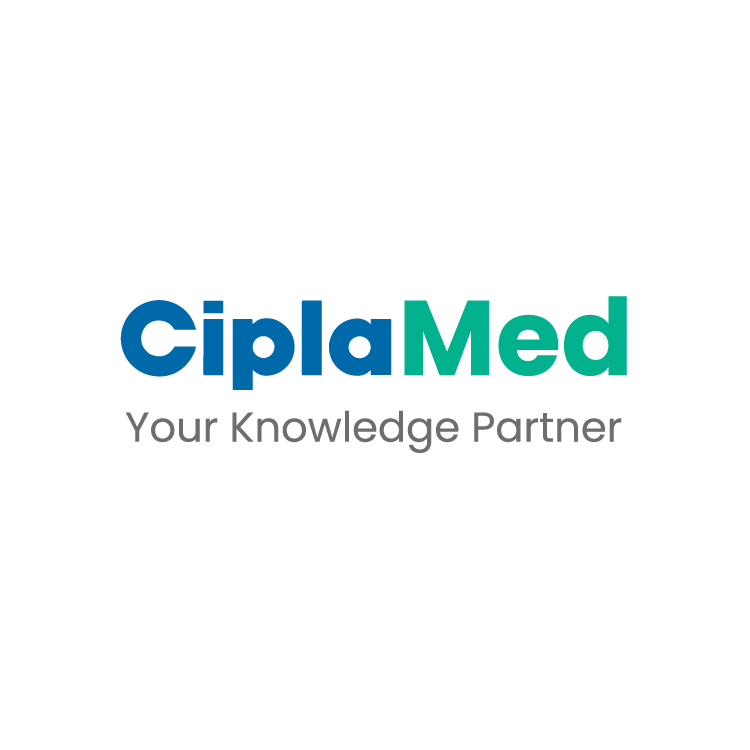ASCO 2025: Highlights from Day 1
OptiTROP-Breast05 Study: Efficacy of Sacituzumab Tirumotecan as First-Line Therapy in Unresectable Locally Advanced/Metastatic Triple-Negative Breast Cancer
- Sacituzumab Tirumotecan (sac-TMT) showed significant efficacy in patients with advanced/metastatic TNBC, achieving an objective response rate (ORR) of 70.7% and a disease control rate (DCR) of 92.7%, regardless of PD-L1 status.
- Among patients with PD-L1 CPS < 10, the ORR remained high at 71.9%, with a median progression-free survival (mPFS) of 13.1 mos & DCR was 93.8%. indicating that sac-TMT is a viable option for this underserved population.
- The treatment was well-tolerated, with grade 3 or higher adverse events occurring in 63.4% of patients; No treatment-related deaths were observed, supporting its manageable safety profile.
Reference
Yongmei Yin et al, Sacituzumab tirumotecan (sac-TMT) as first-line treatment for unresectable locally advanced/metastatic triple-negative breast cancer (a/mTNBC): Initial results from the phase II OptiTROP-Breast05 study. JCO 43, 1019, (2025).
COMMANDS Trial: Luspatercept Demonstrates Superior Survival and Response Duration for Transfusion Independence in Erythropoiesis Stimulating Agent-Naive Patients with Low-Risk Myelodysplastic Syndromes vs Epoetin Alfa
- Red blood cell transfusion independence (RBC-TI) for ≥12 weeks was achieved by 76.4% of patients in Luspatercept (LUSPA) group versus 55.8% in Epoetin alfa (EA), with a median cumulative duration of RBC-TI ≥12 wks of 187.3 weeks vs 94.9 weeks
- The median duration of the longest RBC-TI ≥12 wks period was significantly longer for LUSPA at 126.6 weeks compared to 86.7 weeks for EA (HR = 0.64)
- Median overall survival (OS) was not reached for LUSPA, while it was 46.7 months for EA, with 5-year OS rates of 54.0% and 41.8%; progression to acute myeloid leukemia was comparable between groups (3.8% vs 4.4%)
- LUSPA signifies a new standard of care for anemia in first-line LR-MDS
Reference
Guillermo Garcia-Manero et al, Overall survival (OS) and duration of response for transfusion independence (TI) in erythropoiesis stimulating agent (ESA)–naive patients (pts) with very low-, low-, or intermediate-risk myelodysplastic syndromes (MDS) treated with luspatercept (LUSPA) vs epoetin alfa (EA) in the COMMANDS trial. JCO 43, 6512, (2025).
MSI-H/dMMR Metastatic Colorectal Cancer (mCRC): Nivolumab (NIVO) plus Ipilimumab (IPI) vs NIVO Monotherapy or Chemotherapy
- NIVO +IPI demonstrated superior progression-free survival (PFS) and PFS2 outcomes as compared to chemo (1L) and NIVO monotherapy (all lines) despite the use of subsequent systemic therapy
- No new safety signals were noted, supporting the use of NIVO+IPI as a standard of care treatment for centrally confirmed microsatellite instability-high/mismatch-repair deficient (MSI-H/dMMR) mCRC
Reference
Heinz-Josef Lenz et al, Nivolumab (NIVO) plus ipilimumab (IPI) vs chemotherapy (chemo) or NIVO monotherapy for microsatellite instability-high/mismatch repair-deficient (MSI-H/dMMR) metastatic colorectal cancer (mCRC): Expanded analyses from CheckMate 8HW. JCO 43, 3501 (2025).
Insights from FIGHT-209 Phase II Study: Pemigatinib for Pre-Treated Glioblastoma or Other Gliomas with Activating FGFR1-3 Alterations
- Patients treated with Pemigatinib (oral, 13.5 mg on days 1-14/21) were grouped as Grp A: A histologically/ molecularly defined glioblastoma (GBM), Grp B: other gliomas, glioneuronal tumors, & neuronal tumors.
- The most common genomic alterations seen in Grp A (88%) were FGFR1-3 fusions/rearrangements, & those seen in Grp B (89%) were FGFR1 mutations.
- The objective response rate (ORR) in Grp A was 8% [6 partial responses (PR), 0 complete responses (CR)]; 28% had stable disease (SD) with an estimated 6-mo PFS rate of 17% & 12-mo OS rate of 48%
- The ORR in Grp B was 22% with 33% patients having SD.
- Patients with GBM harboring pemigatinib-sensitizing FGFR alterations did not meet the ORR of > 28%.
- Patients with CNS tumors other than GBM exhibited durable disease stabilization, toxicities were manageable.
Reference
Enrico Franceschi et al, A phase 2 study of pemigatinib for pre-treated glioblastoma or other gliomas with activating FGFR1-3 alterations: Results from FIGHT-209. JCO. 43, 2003, (2025).
Artificial Intelligence–Assistance Software for HER2-Low and HER2-Ultralow IHC Interpretation Training Improves Diagnostic Accuracy
- Digital assessment of (HER2 IHC using artificial intelligence (AI) proved more accurate for pathologists versus using reference scores without AI (89.6% vs. 76.3%, score difference: 13.3%)
- Use of AI was also associated with precise diagnosis of HER2 across various clinical categories of null, ultralow, low and positive cases (88.5% vs. 66.7%)
- In fact, AI ensured use of HER2-targeted therapies in the HER2-low and HER2-ultralow cases (4.0%) which were otherwise misclassified as HER2 null in assessments without AI (29.5%)
- This study throws light on the importance of AI supported biomarker evaluation and better decision making in HER2 therapy
Reference
Mulder D. et al, Use of artificial intelligence–assistance software for HER2-low and HER2-ultralow IHC interpretation training to improve diagnostic accuracy of pathologists and expand patients' eligibility for HER2-targeted treatment. JCO 43, 1014, (2025).
WaveLINE-003 Phase 2/3 Trial: Efficacy and Safety of Zilovertamab Vedotin plus Standard of Care in Relapsed/Refractory Diffuse Large B-Cell Lymphoma
- The study showed that zilovertamab vedotin (ZV), in combination with rituximab and gemcitabine-oxaliplatin (R-GemOx), was effective and safe at a RP2D of 1.75 mg/kg as compared to ZV doses of 1.5 mg/kg or 2.0 mg/kg in relapsed/refractory diffuse large B cell lymphoma (R/R DLBCL)
- Almost all patients reported TRAE (AE, 98% patients) with grade ≥3 TRAEs reported in 65% patients; neutropenia, neutrophil count decreased, platelet count decreased, and anemia being the most common
- However, discontinuations due to AE were low (n=2); 1 pt died due to sepsis in the 2.0 mg/kg dose cohort
- ZV 1.75 mg/kg (56%) achieved an objective response rate similar to ZV 2.0 mg/kg (57%) and higher than ZV 1.5 mg/kg (27%)
- The median duration of response was 14.4 mo for ZV 1.5 mg/kg and 8.7 mo for ZV 1.75 mg/kg
- ZV 1.75 mg/kg dose achieved a higher 6-month overall survival rate (78.8%) as compared to ZV 1.5 mg/kg (70.0%) and ZV 2.0 mg/kg (68.6%)
Reference
Armand P., et al, WaveLINE-003: Phase 2/3 trial of zilovertamab vedotin plus standard of care in relapsed/refractory diffuse large B-cell lymphoma. JCO 43, 7005, (2025).
Concurrent and Adjuvant Temozolomide in Anaplastic Glioma without 1p/19q Codeletion: Final Analysis of EORTC Phase III CANTON Trial
- After median follow-up of 10.9 years; concurrent temozolomide (TMZ) did not improve overall survival (OS) regardless of isocitrate dehydrogenase 1 and 2 (IDH) status (HR: 0.906; p=0.28)
- Adjuvant TMZ increased OS in patients with IDH mutation (mt) tumors (HR: 0.54, p < 0.0001) but not in IDH wild type tumors
- Median OS in patients treated with adjTMZ in patients with IDHmt glioma who received adjTMZ after radiotherapy was 12.5 years (p<0.0001)
Reference
Martin Van Den Bent et al, Final clinical and molecular analysis of the EORTC randomized phase III intergroup CATNON trial on concurrent and adjuvant temozolomide in anaplastic glioma without 1p/19q codeletion. JCO43, 2002, (2025)
Patritumab Deruxtecan in Active Brain Metastases and Leptomeningeal Disease from Advanced Solid Tumors: TUXEDO-3 Phase II Trial
- Patritumab deruxtecan (HER3-DXd) showed substantial CNS activity in parenchymal metastases and leptomeningeal disease (LMD). Primary endpoints were met in all three cohorts
- Cohort 1 (metastatic breast cancer): 23.8% had intracranial response irrespective of subtype; 40.0% responders had received previous topo I based antibody drug conjugates
- Cohort 2 (non–small cell lung cancer): 25.0% had intracranial response
- Cohort 3 (LMD): 55.0% achieved 3-month overall survival irrespective of the type
Reference
Matthias Preusser et al, Patritumab deruxtecan (HER3-DXd) in active brain metastases (BM) from metastatic breast (mBC) and non–small cell lung cancers (aNSCLC), and leptomeningeal disease (LMD) from advanced solid tumors: Results from the TUXEDO-3 phase II trial. JCO 43, 2005, (2025).
Survival Update on First-line Encorafenib + Cetuximab + mFOLFOX6 in BRAF V600E-mutant Metastatic Colorectal Cancer (mCRC) (BREAKWATER)
- The BREAKWATER trial demonstrated a statistically significant and clinically meaningful improvement in PFS and OS with the combination of encorafenib, cetuximab, and chemotherapy compared to standard chemotherapy.
- The combination of encorafenib + cetuximab and mFOLFOX6 represents a new first-line standard-of-care (SoC) therapy in patients with metastatic colorectal cancer with a BRAF V600E mutation.
Reference
Elena Elez et al, First-line encorafenib + cetuximab + mFOLFOX6 in BRAF V600E-mutant metastatic colorectal cancer (BREAKWATER): Progression-free survival and updated overall survival analyses. JCO 43, LBA3500, (2025).
ANCHOR Trial: Anlotinib versus Bevacizumab Added to Standard First-line Chemotherapy Among Patients with RAS/BRAF Wild-type, Unresectable Metastatic Colorectal Cancer (mCRC)
- ANCHOR trial: Anlotinib versus bevacizumab added to standard first-line chemotherapy among patients with RAS/BRAF wild-type, unresectable mCRC
- The primary objective is to determine if anlotinib plus CAPEOX is non-inferior to bevacizumab plus CAPEOX in terms of progression-free survival (PFS).
Reference
Ke-Feng Ding et al, Anlotinib versus bevacizumab added to standard first-line chemotherapy among patients with RAS/BRAF wild-type, unresectable metastatic colorectal cancer: A multicenter, prospective, randomised, phase 3 clinical trial (ANCHOR trial). JCO 43, LBA3502, (2025).




